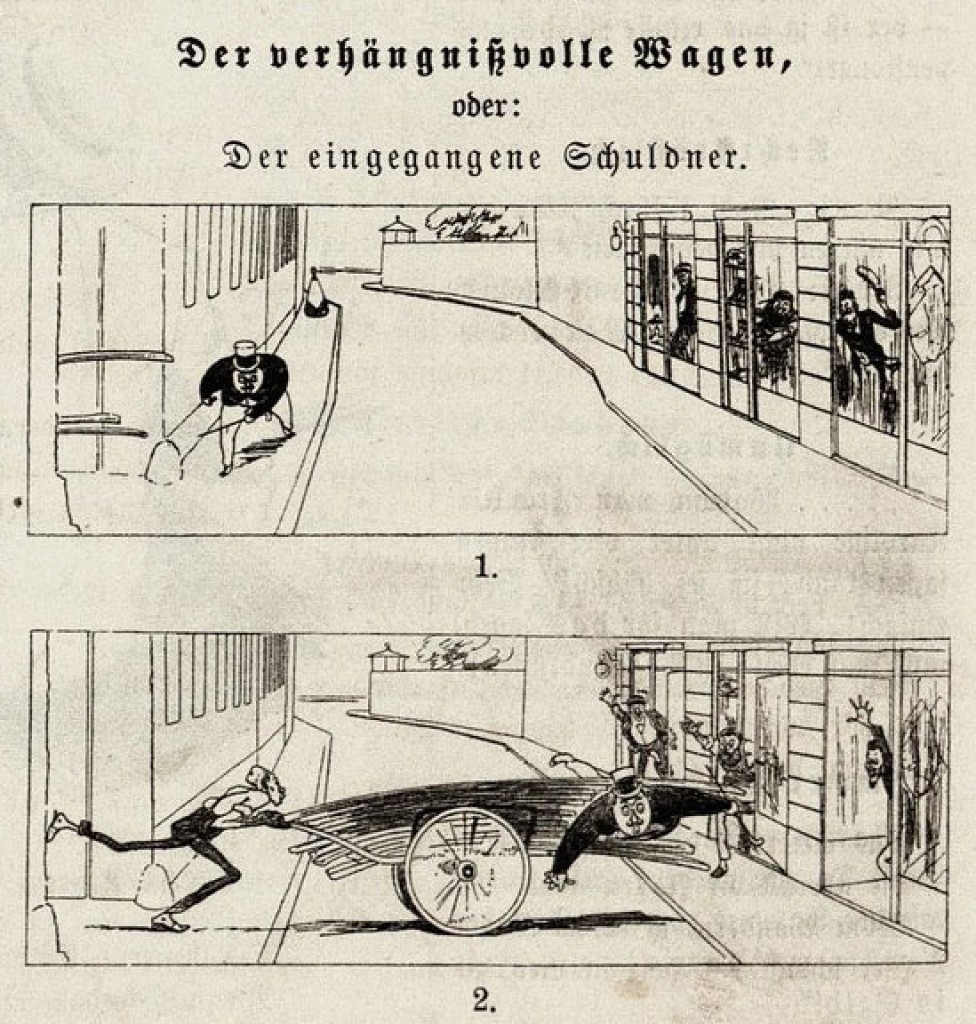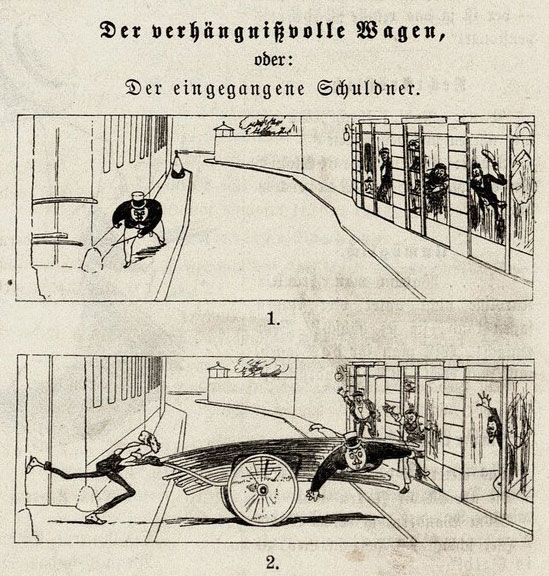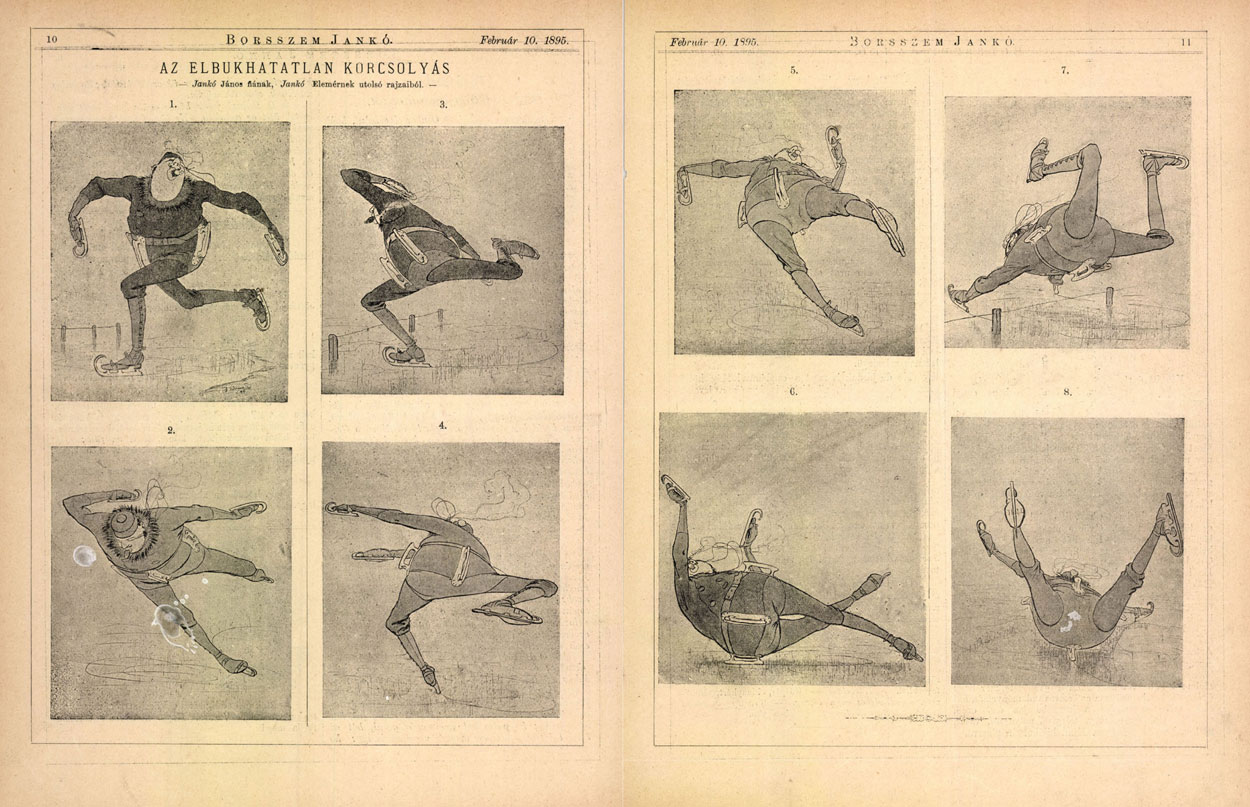From: Fliegende Blatter (1892).
Elemér Jankó was a 19th-century Hungarian cartoonist, caricaturist, painter and graphic artist. During his short life, he contributed to magazines like Fliegende Blatter, Borsszem Jankó, Urambátyám and Újság Vasárnapja.
Early life and education
Elemér Jankó was born in 1872 as the son of the Hungarian illustrator, caricaturist and painter János Jankó. As a child, he sent his drawings to the children's paper Kis Lap, where editor Adolf Agai recognized his talent and published his submissions. Inheriting his father's humor and drawing talent, he got his artistic education at Országos Mintarajziskola (National School of Design) in Budapest (nowadays the Hungarian University of Fine Arts). He later continued his studies in the Munich atelier of the painter Simon Hollósy. In Munich, he also studied at the Academy of Fine Arts, where the painter Gabriel von Hackl was one of his teachers.
Cartoons and comics
In 1887, Jankó made humorous drawings for the newly founded Munich magazine Radfahr-Humor, as well as the humor weekly Fliegende Blatter (two of his drawings were published posthumously in 1898). In Hungary, Elemér Jankó's drawing appeared in Borsszem Jankó, the political satirical newspaper to which his father was also a contributor. Just like János Jankó, Elemér Jankó was one of the early Hungarian caricaturists to use sequential narratives. Between 1886 and 1892, his satirical comics, spoofing noblemen and citizens, appeared on the front page of the humor magazine Urambátyám. His comic strip 'A Kerekes Bódi bácsi Münchenben' ("Old Kerekes Bódi in Munich") appeared in the Sunday newspaper Újság Vasárnapja.
Death and legacy
In 1892, while living in Munich and still at the start of his career, Elemér Jankó suddenly died of tuberculosis. He was only twenty years old. In 1895, a posthumous collection of his remaining drawings was published.
Sequential humor in Borsszem Jankó, published posthumously in 1895. The text caption reads "From the last works of János Jankó's son Elemér Jankó".




